 Rundlet-May House
Rundlet-May House
Carriage Barn
Practicality Versus Aesthetics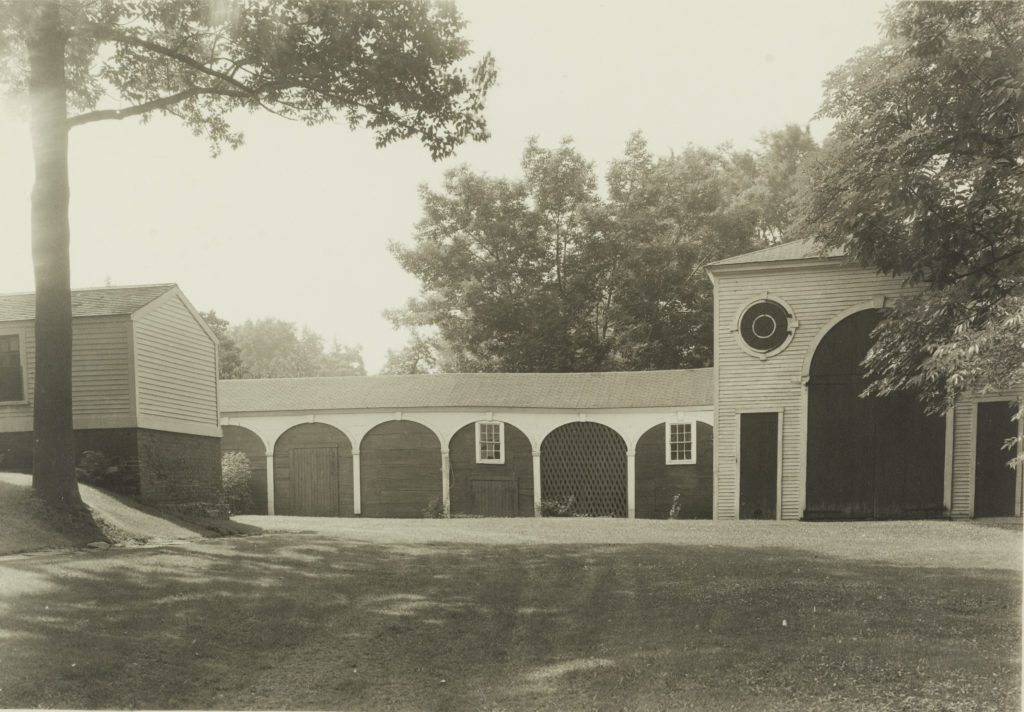
The carriage barn and stables are located at the end of a series of interconnecting outbuildings projecting from the rear of the house. These outbuildings, containing a tack room, pig sty, and potting shed, are original to the house and not the result of a pieced-together structure added over time. Neoclassical style trompe l’oeil arches complement the symmetrical and elegant architecture of the house and provide an aesthetic barrier to the service yard located behind the carriage barn. By family tradition, this area was referred to as the “cow yard,” and city tax records reveal that between 1825 and 1850, the Rundlets owned as many as four cows and four oxen.
Some of the most necessary tasks of nineteenth-century food preparation were also relegated to this area such as the occasional butchering of an animal. Its proximity to the scullery meant that animals could be “prepared” outside and brought into the scullery for further work before being cooked. Also to be noted was that it is also likely that manure was stockpiled nearby; a mixture of life tasks, sights, and smells, that all were a part of running the house.
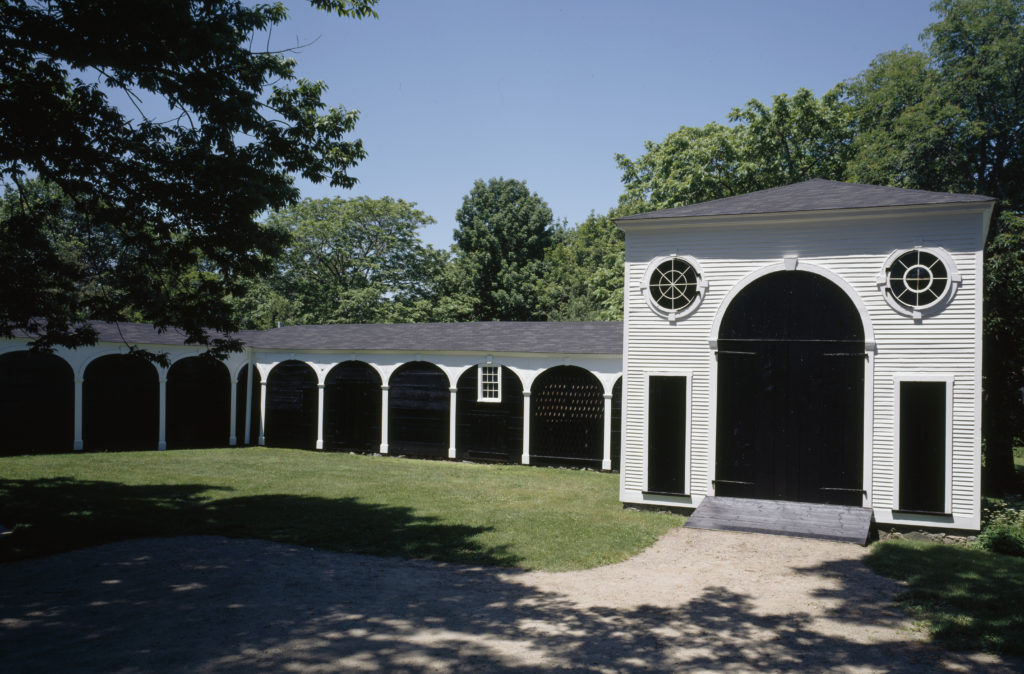
Privies, Roses, and Indoor Convenience
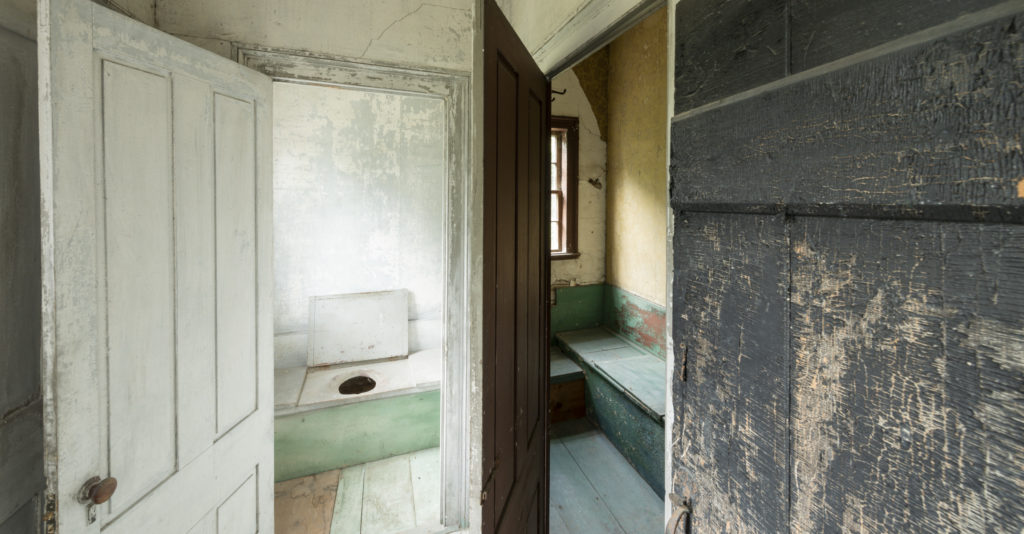
Exiting the scullery through a door and walking down a short flight of steps, luxuriously covered from any outdoor rain or wind by a roof, any member of the Rundlet household could enter a door off the scullery and walk a few more steps down a storage hallway in the connecting carriage barn. At the end of the hallway are wall-papered privies in the attached ell. The largest of the six is in a single closet assuring the user of maximum privacy. The others vary in size accommodating the large household which included the Rundlets, their children, and their staff. Two to three times a year, a “night soil man” arrived with a “rude cart,” accessed the pit below the privies through an outside door and removed and carted away the waste.
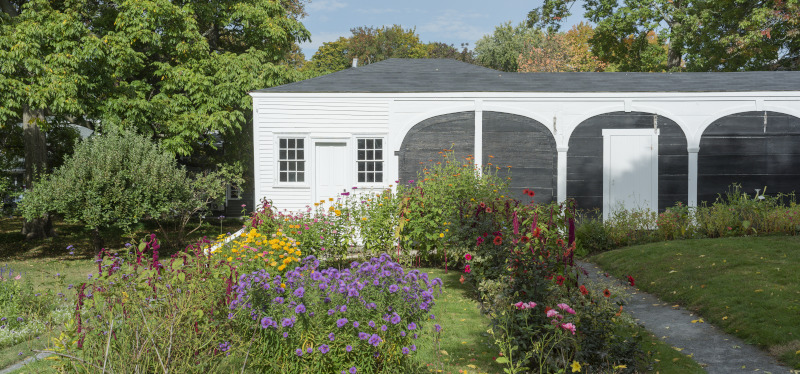
Getting to the Outbuildings
No Need to Go OutsideJust Steps Away
In this exterior view you can see the covered passages that lead to the privy and the barn, allowing access without ever stepping outside. Click the hot spots to see interior views.
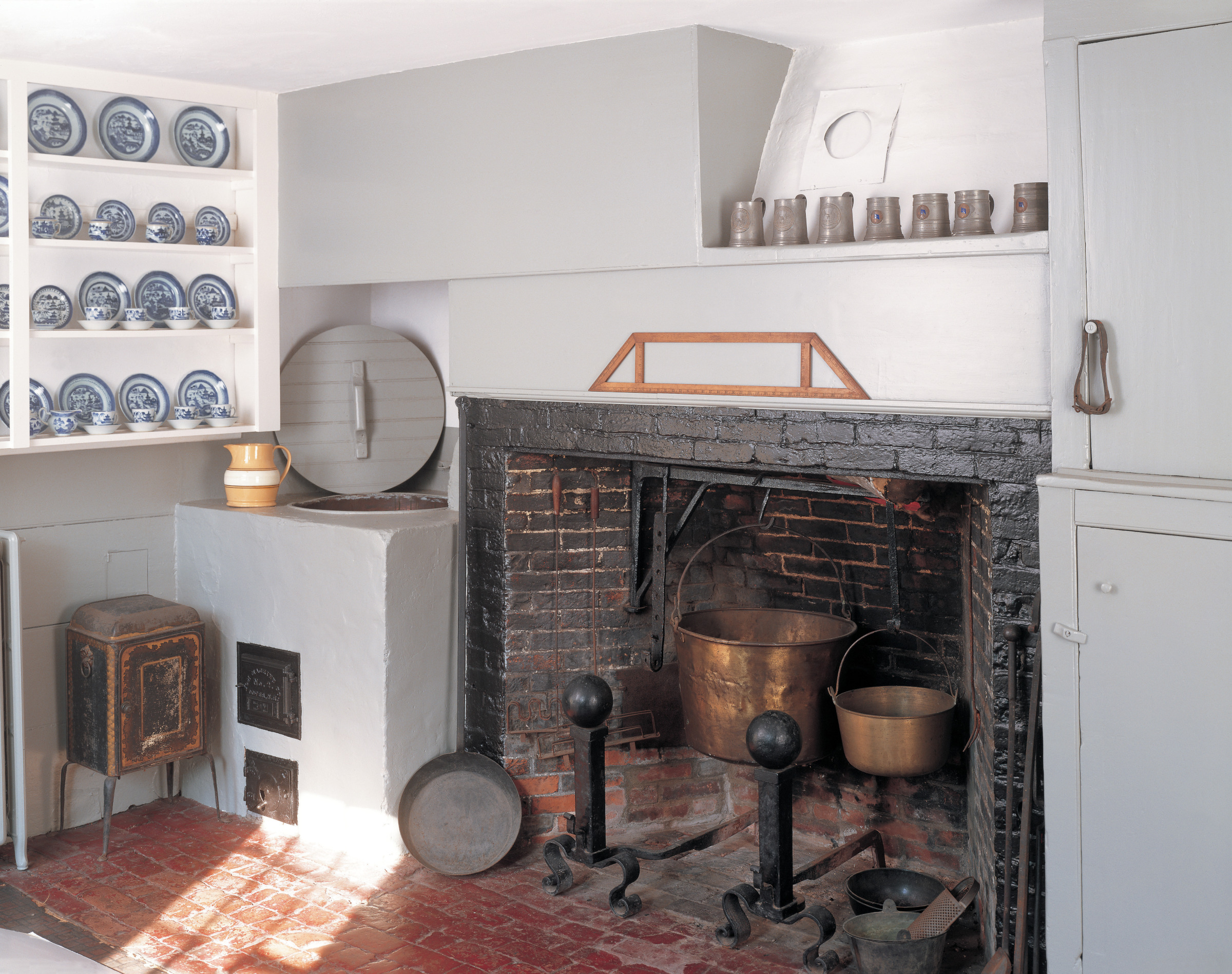
Back Kitchen
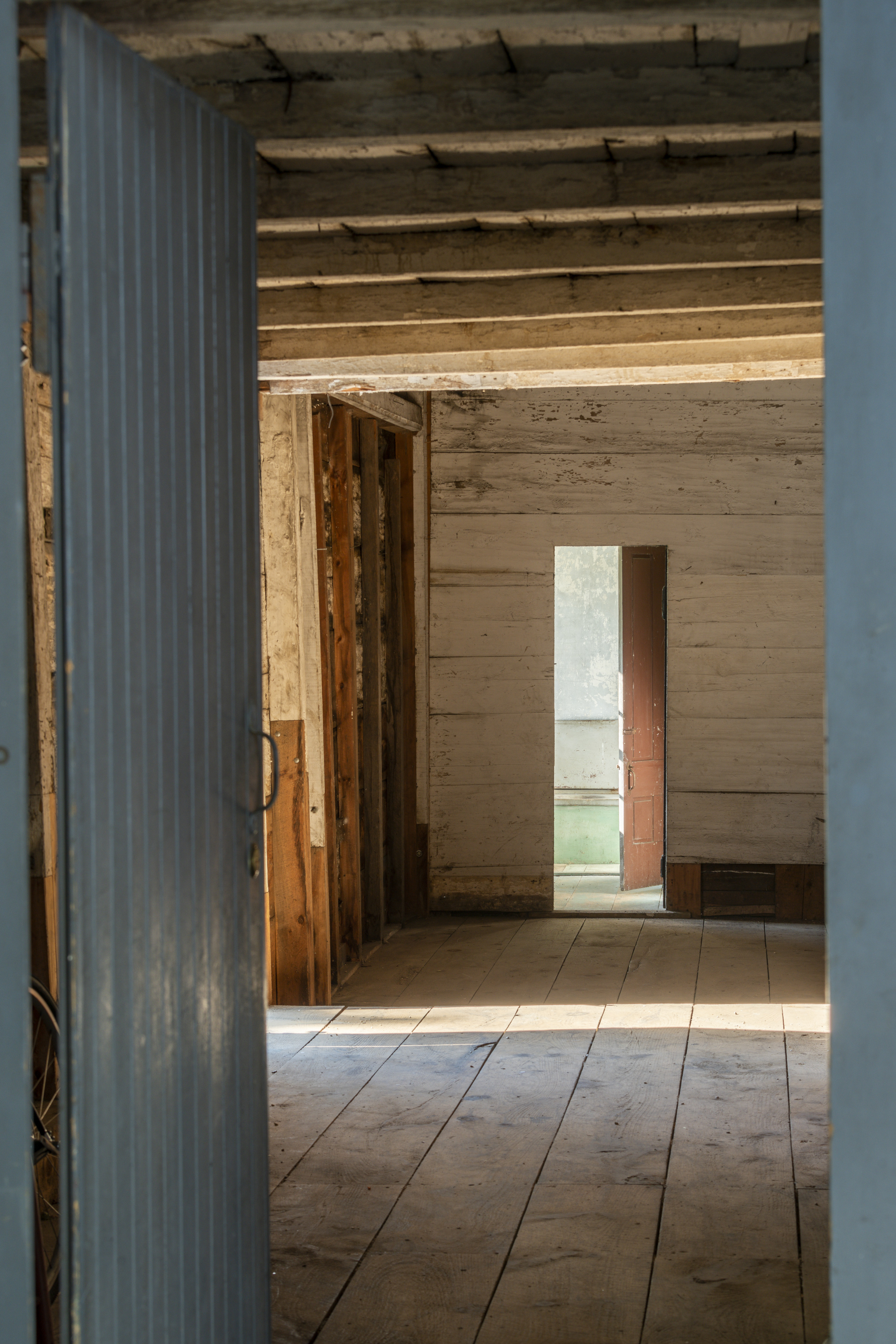
Back door off the kitchen opens to corridor.
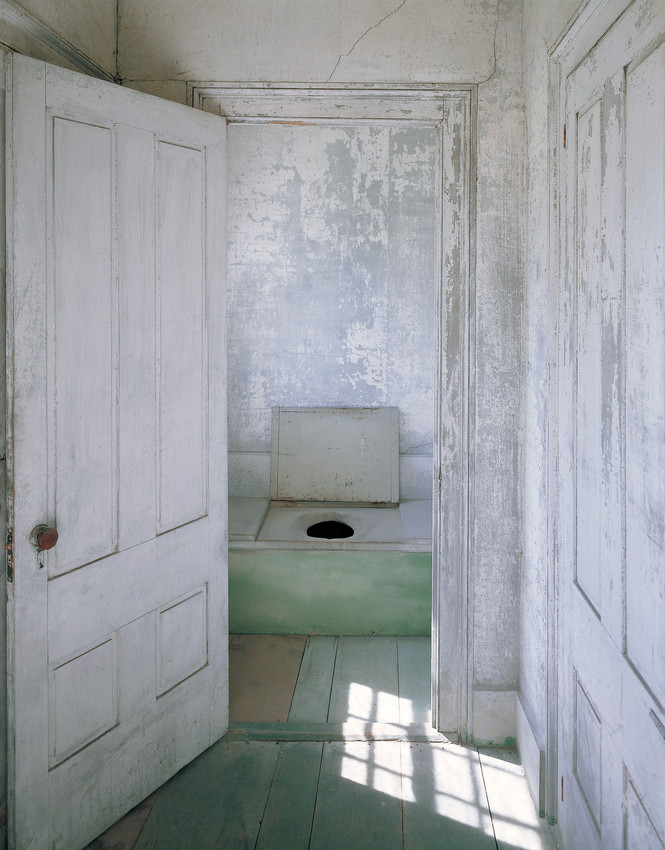
Privies located in this corner section.
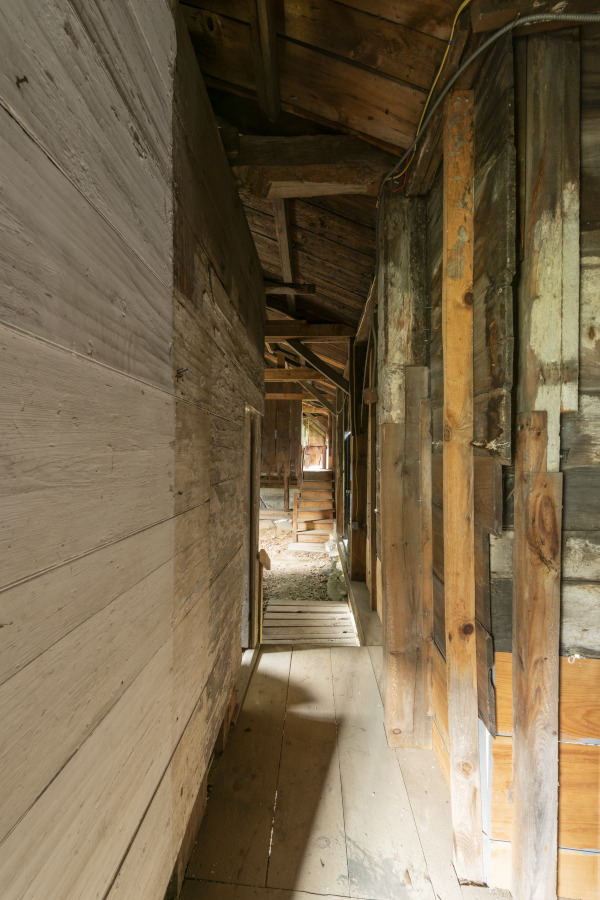
This passageway to the right of the privy originally connected to the barn.
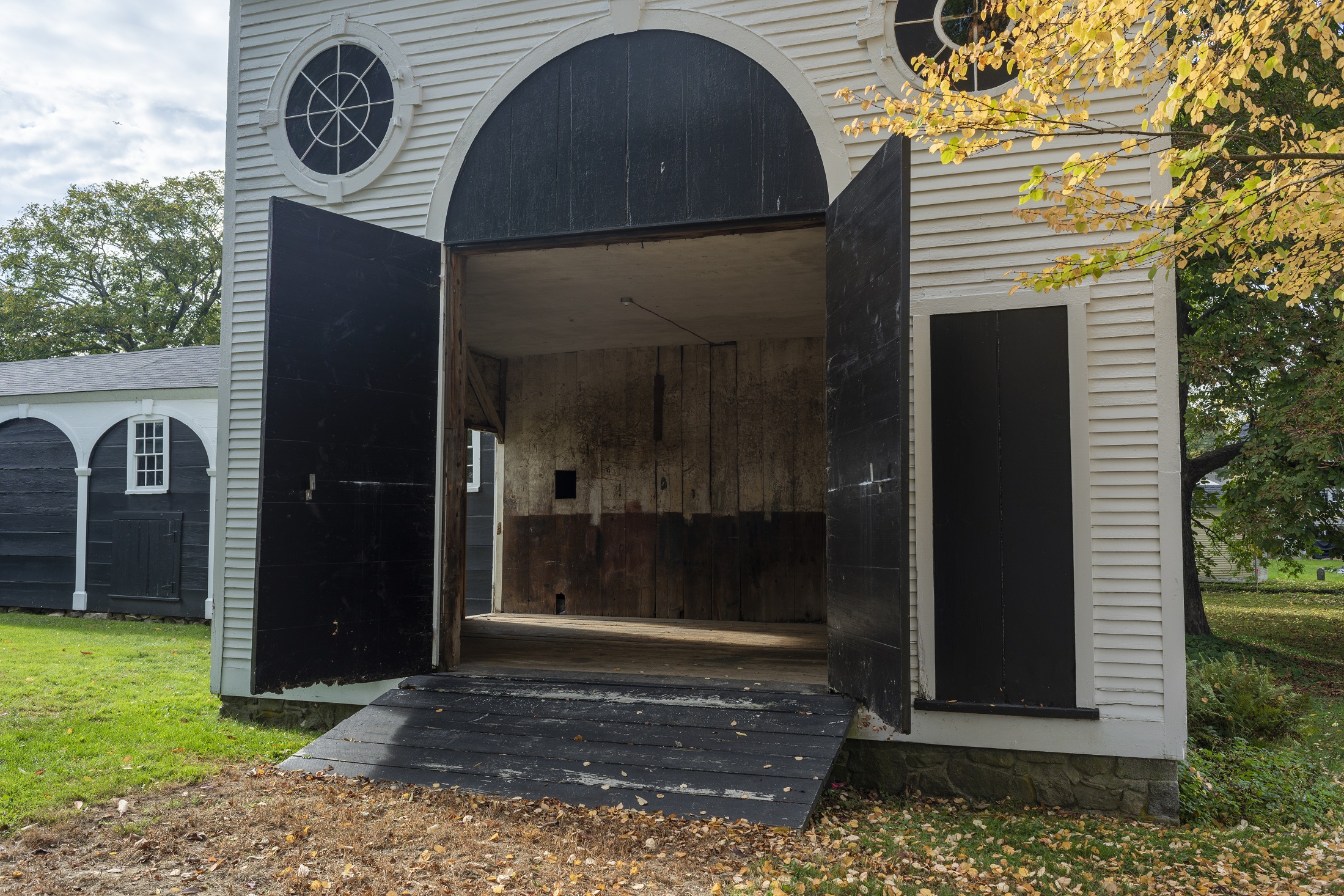
Carriage barn
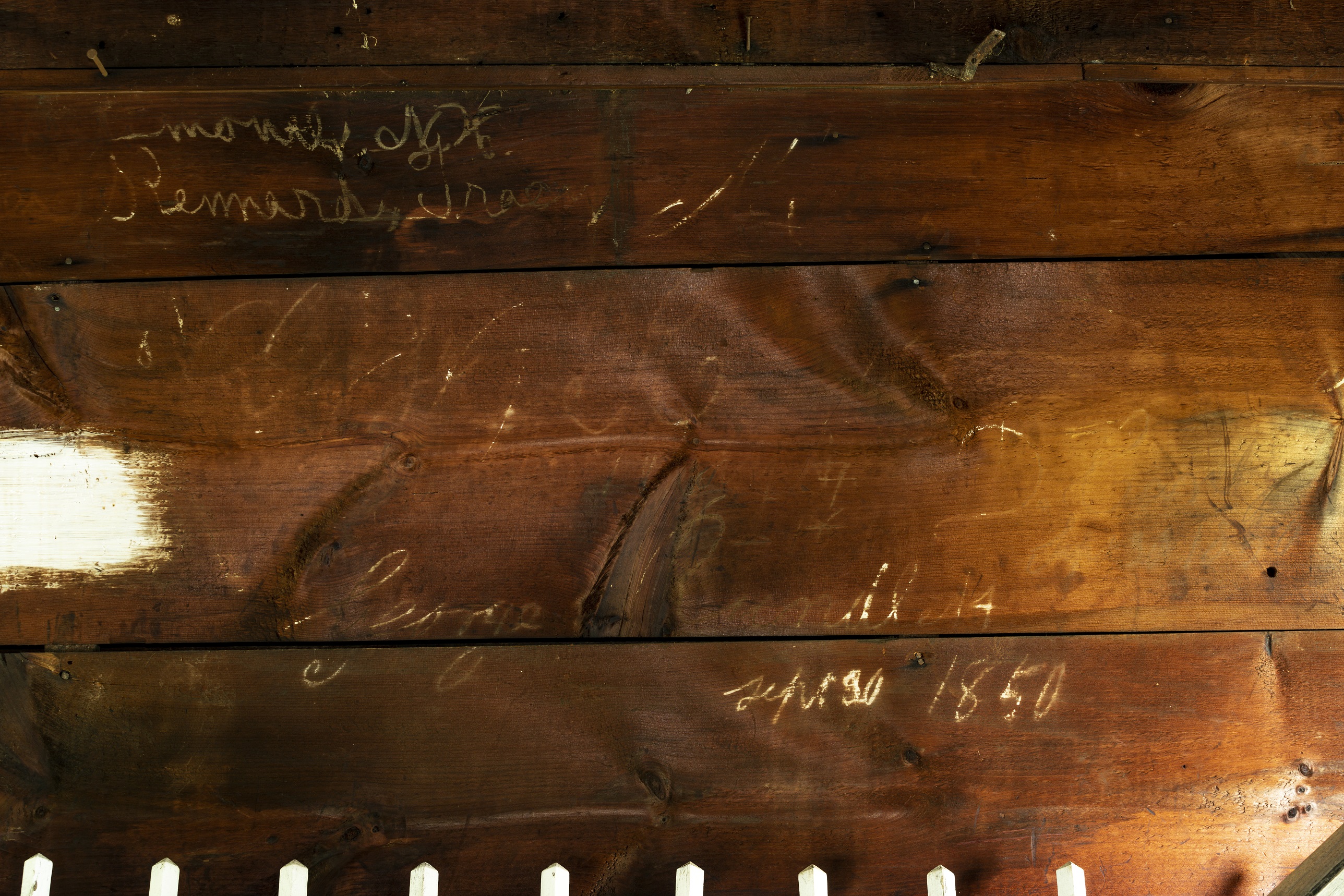
Signed barn wall bearing the name George Rundlet Sept 30 1850.
to learn more